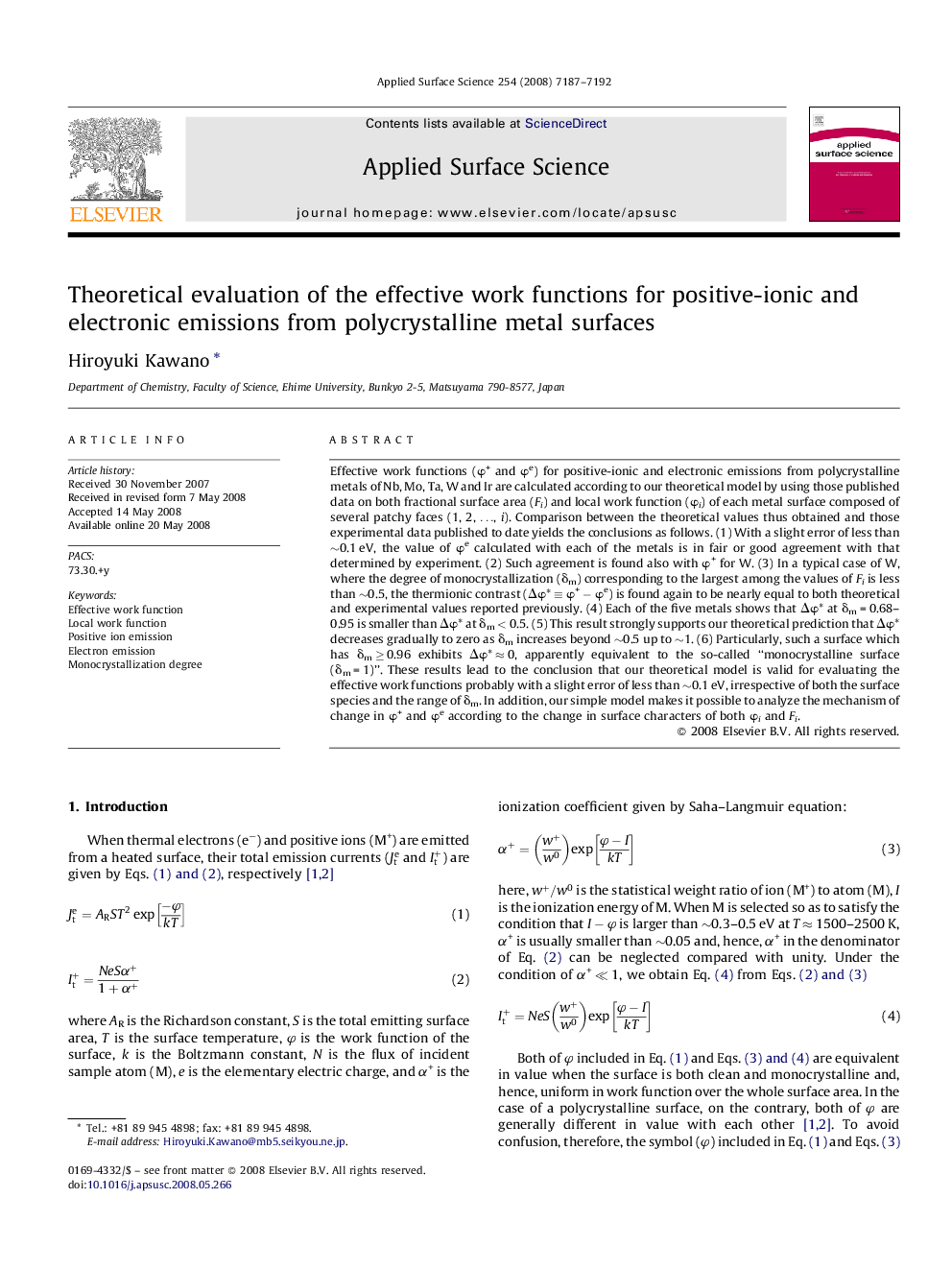| Article ID | Journal | Published Year | Pages | File Type |
|---|---|---|---|---|
| 5361066 | Applied Surface Science | 2008 | 6 Pages |
Abstract
Effective work functions (Ï+ and Ïe) for positive-ionic and electronic emissions from polycrystalline metals of Nb, Mo, Ta, W and Ir are calculated according to our theoretical model by using those published data on both fractional surface area (Fi) and local work function (Ïi) of each metal surface composed of several patchy faces (1, 2, â¦, i). Comparison between the theoretical values thus obtained and those experimental data published to date yields the conclusions as follows. (1) With a slight error of less than â¼0.1 eV, the value of Ïe calculated with each of the metals is in fair or good agreement with that determined by experiment. (2) Such agreement is found also with Ï+ for W. (3) In a typical case of W, where the degree of monocrystallization (δm) corresponding to the largest among the values of Fi is less than â¼0.5, the thermionic contrast (ÎÏ* â¡Â Ï+ â Ïe) is found again to be nearly equal to both theoretical and experimental values reported previously. (4) Each of the five metals shows that ÎÏ* at δm = 0.68-0.95 is smaller than ÎÏ* at δm < 0.5. (5) This result strongly supports our theoretical prediction that ÎÏ* decreases gradually to zero as δm increases beyond â¼0.5 up to â¼1. (6) Particularly, such a surface which has δm â¥Â 0.96 exhibits ÎÏ* â 0, apparently equivalent to the so-called “monocrystalline surface (δm = 1)”. These results lead to the conclusion that our theoretical model is valid for evaluating the effective work functions probably with a slight error of less than â¼0.1 eV, irrespective of both the surface species and the range of δm. In addition, our simple model makes it possible to analyze the mechanism of change in Ï+ and Ïe according to the change in surface characters of both Ïi and Fi.
Related Topics
Physical Sciences and Engineering
Chemistry
Physical and Theoretical Chemistry
Authors
Hiroyuki Kawano,
